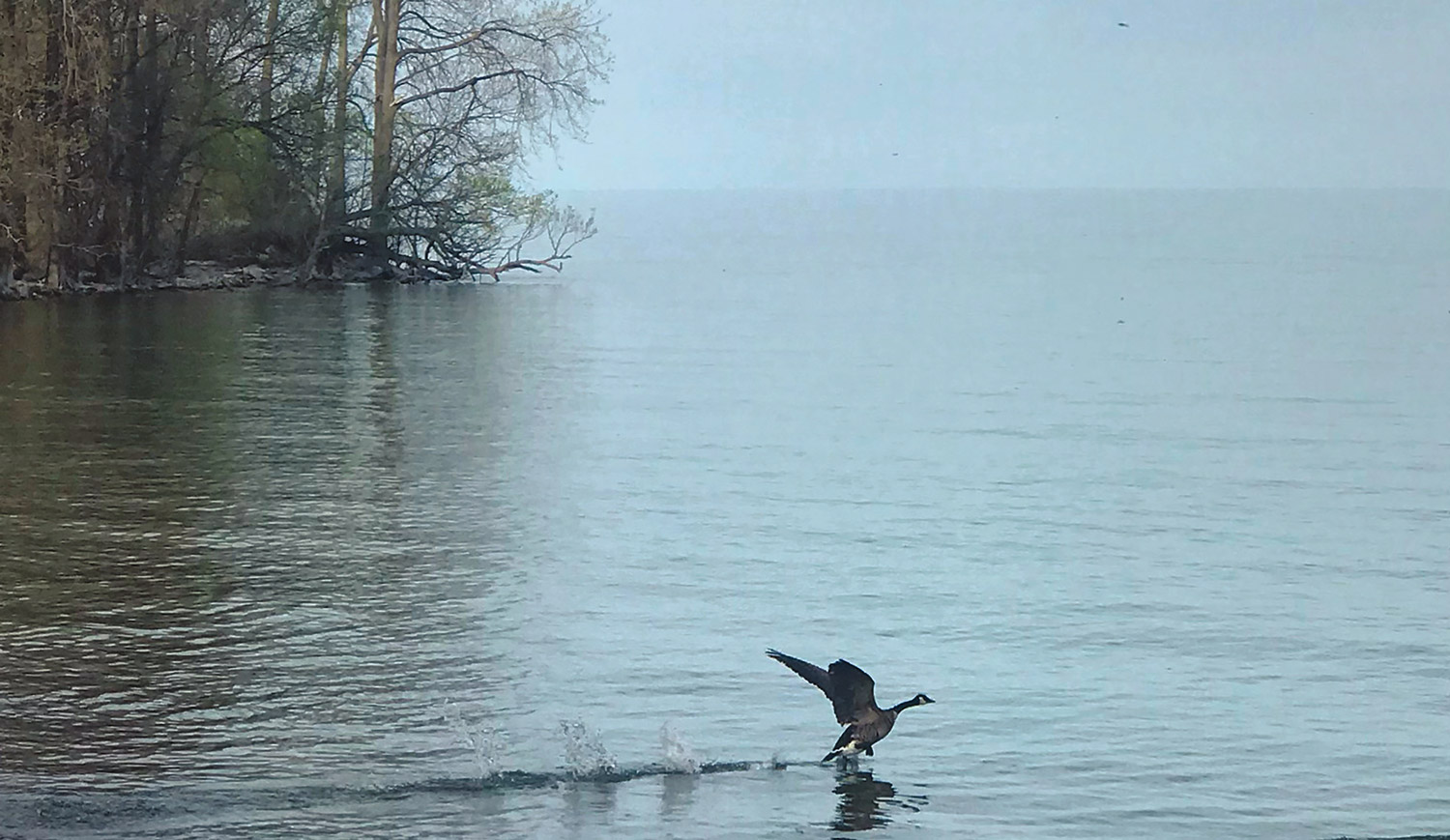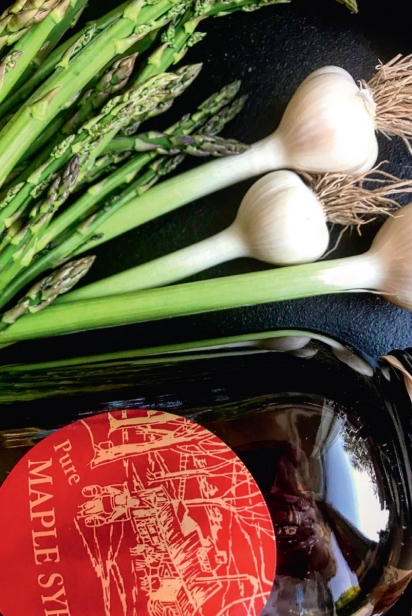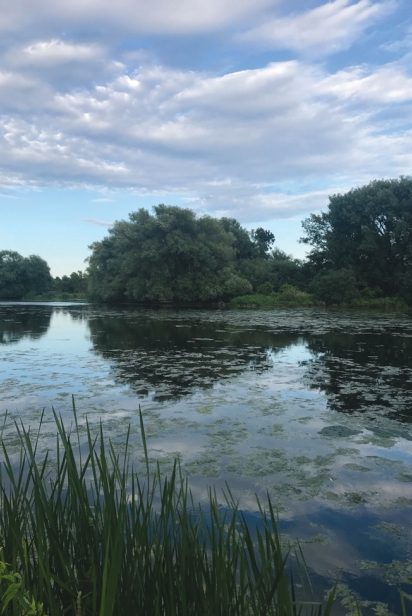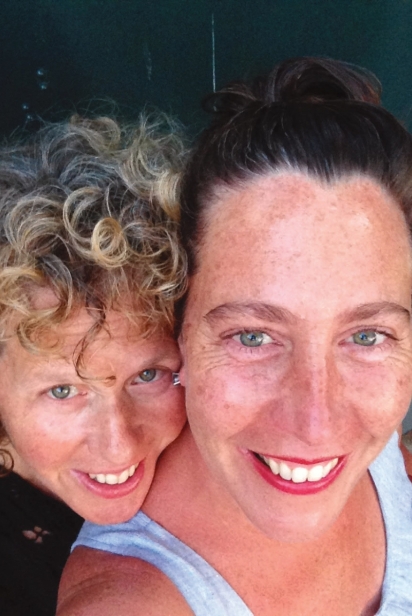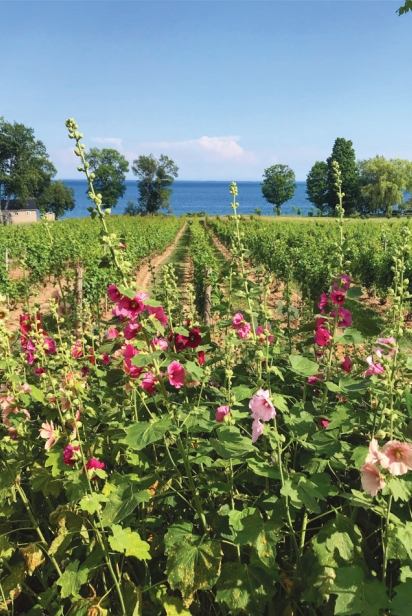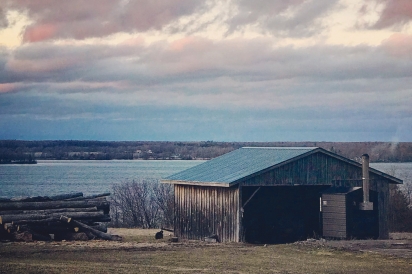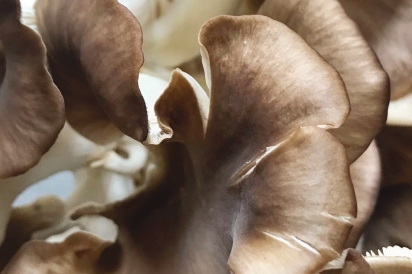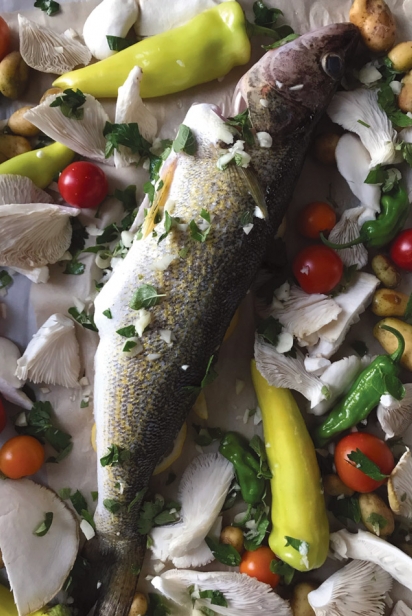Four Seasons in Quarantine North of the Border
Thousands of miles away from our Northern California home, our place of shelter is a farmhouse in rural Canada, rented on the fly in late February 2020, when shit began to get real and visions of meetings in Montreal evaporated. We navigated to Prince Edward County, an island in southern Ontario on the northeastern shore of Lake Ontario, knowing only that a friend of a friend had a summer house there.
One suitcase each, a yoga mat and a few road staples don’t make a home. But a box arrived with wind chimes and Japanese incense, and the house has a functional kitchen, Wi-Fi for work, a big bed with a decent mattress, and good light for reading. Touchstones in various time zones and a steady delivery of local whisky help blur the ghosts that come with the rural blackness of evening, the only illumination the waxing and waning moon.
As the Pandemic worsened, ripping through Ottawa and Montreal to the north and New York to our south, many of our fellow islanders appeared Covid-unconcerned. My wife and I agreed we wouldn’t shop in the island’s stores, the final nails in the traditional retail coffin taking the shape of cups of coffee served to us in a local café, the unmasked barista’s fingers on the lips of our mugs.
Far from anywhere resembling home, in need of grounding and having just a handful of now-locked-down Canuck friends, we did the only thing that felt right: We sought out local farmers who grow good, clean food. A neighboring farm offers eggs from an on-your-honor fridge, another sells Red Fife flour grown in his field. Vineyards and orchards produce wine and cider; beekeepers jar honey and roll candles; cheesemakers and bread bakers leave wares at backdoors for pickup. Newly slaughtered birds are left in coolers on porches. Buckets hang from maple trees to catch sap while chimneys attached to centenarian barns smolder as syrup reduces.
It’s easier to score dope than fresh greens in late-winter Canada, but find them we did: arugula, kale, cabbage and spinach proffered from farmers who soon became socially distanced friends.
SPRING
Prince Edward County calls to mind West Marin, its pastoral land leaning against an ever-present body of water with fingers of fog and small organic farms. Our rented farmhouse sits on a rural county road at the edge of a forest, the wildlife living there saving me from melancholy.
Once weekly, we venture out to surrounding farms for vegetables, left at the end of driveways or on shelves at honor stands, payment transferred electronically from bank account to bank account. A family-owned health food store on the other side of the island, a good morning’s drive round trip, leaves a box for us in the alleyway. Blocks of Stirling butter, sprouted tortillas, and non-homogenized milk and cream in glass bottles redeem the horrendous lemons and bananas, both tiny and battered with brown spots, rivaling my Nonna Turbina’s marked and wrinkled hands. Casandra is one of the sisters who runs the place, the phone our only connection. Her lilting Canadian accent is heard over a crying newborn, my mind conjuring a picture of her with freckles, flowing strawberry-blond locks and a sturdy Nordic frame, baby latched onto nipple while she operates the register and checks in deliveries. Married to a Mohawk gentleman, they live with their infant in the Tyendinaga Mohawk Territory, a First Nation Reserve. Driving off-island through the reservation, its main drag lined with unadorned shops hawking cheap gasoline, cigarettes and marijuana, leaves me with a malaise that sticks like heavy perfume.
A week’s worth of milk and cream, the necks of each bottle stopped up with a thick head of crema, is transformed into morning yogurt by my wife. She acquiesces to my request for extra-dense yogurt, straining every bit of whey through the filter in a Chemex carafe, the thin liquid kept for making ricotta. Madagascar Bourbon vanilla beans from an Ontario bakeshop are sliced open, the precious seeds mixed into the custardy yogurt before refrigerating overnight, the flavors mingling until our highly anticipated breakfast. One scoop of yogurt is christened in a pool of dark maple syrup, which is so prolific on this island the smoky sweetness wafting from sugar shacks can be smelled on the air in March, reminding me of Napa Valley’s hot, boozy breath come September.
A hand-painted sign with an arrow directs us to Vicki’s Veggies, a tiny, unmanned house trimmed in neon green. Her reputation proceeded her long before the directional. With her tangle of curly hair and enormous heart, Vicki is a proud eighth-generation islander. She’s also hugely responsible for making two strangers feel welcome, well-fed and connected to this extraordinary community. Saving rare heirloom tomato seeds for 20-plus years, she grows more than 250 plants in her greenhouses and hosts a plant start sale every spring, drawing aficionados from as far away as Montreal. We scooped up a rainbow flag of tomatoes: Foxy Brown, bronze Aladdin’s Lamp, Oxheart White, Gold Dust and black-as-night Indigo Apple. It was a rookie move to plant a garden so soon after arriving, without a clear understanding of the seasons and the abundant production of the area’s farms. But sinking my hands into the earth is calming, and ensuring we have nuts for winter overshadowed any logic; the world now illogical to me.
SUMMER
As if overnight, snows melted and the seemingly dead, omnipresent hedgerows lining county roads, fields and yards sprout thick, oval leaves, which glow a luminous green on gray days. Bright red seedpods pregnant with the possibility of new life force themselves to the tips of the branches before exploding into the world. The island blanketed in wild lilac. Like a fully present, psychedelic drug trip, my world is saturated colors, the air indescribably dense with fragrance. A symbol of confidence, lilacs exhibit a flagrant, fragrant, flashy show of hope for the future that cannot be missed, even by the most pessimistic. With each warm breath of air off the lake, the scent astounds. I want to roll around in it, eat it, drink it. How is it possible to capture the mystical, so it remains a part of you always?
Natalie lays out a wobbly table piled with onions, eggs and strawberries underneath a faded green awning on the corner of their island property. She and her husband recently left Quebec City to start their organic farm on the island. While Natalie is as elegant in bearing as most Frenchwomen, her wide smile and dirt-under-the-fingernails earthiness is pure Nord Americain. The strawberries are small and sweet-tart and redolent of summer dresses and stained fingertips. Rinsing each berry of garden dust, we stand at the sink ripping fruit from stem with our teeth like bears in spring. The remaining berries are roasted low and slow with balsamic vinegar and jarred; this blast of summer judiciously spooned atop our morning yogurt. Half a flat is never enough.
No shopping in traditional retail stores means peeling back the layers of this community to its studs, finding the small producers of good food and drink. An on-your-honor farm stand just up the county road collaborates with several island producers. Stocked late spring through mid-autumn, the creaky stand groans under the weight of spinach, kale, sprouting onions, squash and green garlic. Mushrooms grown in a farmhouse basement are displayed with names and attributes, the frill of lion’s mane resting near pink, white and blue oyster mushrooms, as sexual as any Georgia O’Keeffe painting.
There are cakes and pies and macaroons made by Cindy, a pastry chef from Alberta who checked out of city life and bought the B&B across the road. In addition to sweets, she makes loaves of rye bread, the wheat supplied by a nearby farm. When I’m feeling indulgent, we’ll leave with one of her lemon-poppy seed pound cakes. Thickly sliced with black coffee, it makes the perfect elevenses, or even again at 2pm.
Abutting the stand is a banged-up chest freezer stocked with cuts of the farm’s goat meat, and dough for biscuits and loaves of bread. But on a stifling, humid afternoon, the cooling treasure is found at the bottom of the whirring freezer: homemade ice-cream sandwiches made with a scoop of vanilla and a ladle of caramel pressed between two slabs of brownie. Split between us, this jolt of sugar never has the opportunity to drip onto our kitchen floor a mere couple of minutes up the road, the wax paper wrappers littering the car’s backseat.
After moving to the island, Henry of Humble Breads built a wood-fired oven in his 140-year-old red barn, with bricks reclaimed from the town’s old Methodist church. Sourcing organic flours and ingredients from Prince Edward County farmers, he sells his small production of naturally leavened loaves of bread at the Saturday Farmers’ Market. During quarantine, Henry set up a makeshift drive-through outside his barn, welcoming paniphiles to claim their pre-ordered bread. Loaves of rye the density of my thigh can be bought whole or in tranches. San Francisco–scented sourdough baguettes are offered next to raisin rye, which makes life-affirming French toast in its later stages. Henry’s sesame seed bagel stacks up against any of its NYC or Montreal brethren, with a dark bottom from the wood oven and a deep primal flavor. Toasted until seeds just singe, it’s slathered with one fat finger of cream cheese and laid with slices of Black Russian tomato, their red and black striping scattered with flakes of salt like fake snow at a Miami Christmas.
AUTUMN
Monarch butterflies have taken leave of this sanctuary, their arduous journey to Mexico underway. The heavy summer air, once thick with dragonflies, has turned crisp and damp and empty of da Vinci’s winged inspiration. Canadian geese fill the skies, and one can hear the murmurations of starlings, black clouds of energy beating as one heart.
We’ve been warned the winters are long, gray and punishing with deep snows, frigid winds and unplowed roads. Ambivalent homesteaders more accustomed to hobby projects, we will ferment and cure and freeze to sustain us for Canada’s dark months. My foraging skills helped me to locate what appeared to be the last upright freezer in all of Ontario, the other preppers almost beating me to the punch.
Her name is Sandi with an i, like the name of the road on which their farm resides. She and her husband, old hippies of the finest kind, have organically farmed 86-acres on this island for almost 30 years: sweet potatoes, shallots and Torpedo onions, Hungarian hot peppers, beets of all stripes and solids, chards and kales, the sweetest fennel. They even tap sap from 500+ trees, their dark amber elixir poured generously atop our morning yogurt. Renowned for their heirloom squashes and pumpkins, the roadside stand has dozens of varieties lined up on an old-timey buggy, each accompanied by a descriptive card. I got carried away, the back seat of our ugly rental car lined with too many unusual Cucurbitaceae.
Scattered on the front porch in a nod to the season, the squash anchors me to time when quarantined days often run together. Soon enough, they’ll be roasted, the saffron flesh scooped into bags and frozen flat like books, for tucking into ravioli tossed with sage butter, or folded into batter with raisins, walnuts and maple syrup for a dense, moist cake to be slathered with cream cheese and eaten with black tea on blustery afternoons.
WINTER
I’d forgotten about winter. California’s seasons are gentle, their delicate passing almost an afterthought, marked by citrus, rains, mustard and fog. Like an inexperienced lover, the seasons in Canada are short, hard and brutish, their unmistakable presence time-stamped the second they arrive. And just when I’m beginning to understand the unique proclivities of a season, bathing in its deliciousness and grasping how best to battle its inconveniences, I’m jolted into the next. One needs a lifetime of winters and springs to understand our seasonal negotiations and alliances with Nature.
Christmas Eve quiet, a long-lapsed Catholic and a Jew light beeswax tapers for the world. Isolated on the edge of a wood, now naked of leaf, the comings and goings of the once-shrouded cardinals and chipmunks, white-tailed deer and red fox, jays and red-headed woodpeckers are fully, fascinatingly conspicuous.
Lights in the driveway provoke anxiety now, my once-hospitable mood set to pandemic-porcupine. Nigl, a talented, transplanted Brit from up the county road, grows an assortment of mushrooms in his basement, many of which this fun-giphile has only read about. His vocation supplies many fancy Covid-closed restaurants, the sad fact of which the blocks of sprouting mushrooms remain blissfully unaware. Nigl waved to the front door, set down a brown bag and departed. Inside was a bouquet of Indian oyster mushrooms rivaling any spray of flowers I’d ever received, along with four perfect chocolate truffles spiked with so much Jamaican rum I felt beach-warm inside from merely sniffing them. The many faces of Santa.
Outside the kitchen window, a murder of crows lands in the morning and then again before dusk. They come in rain; they come in snow. Squawking and screeching, their presence is not to be denied. The crows’ late afternoon arrival prompts thoughts of suffering and a fervent hope this unseen dread will grant Mother Nature the reprieve she desperately needs, and provide us the wisdom to understand we earthlings are all interconnected beings, our borders extending to the very edges of Earth’s atmosphere.


